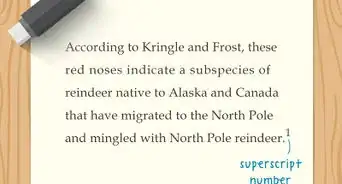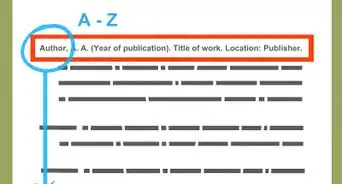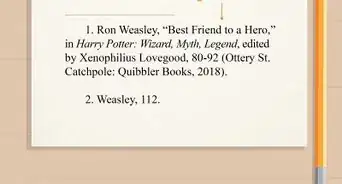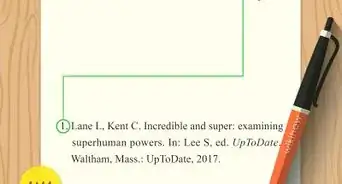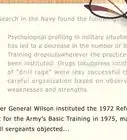This article was co-authored by Jamie Korsmo, PhD. Jamie Korsmo is a Ph.D. candidate in English at Georgia State University.
There are 8 references cited in this article, which can be found at the bottom of the page.
wikiHow marks an article as reader-approved once it receives enough positive feedback. This article received 15 testimonials and 100% of readers who voted found it helpful, earning it our reader-approved status.
This article has been viewed 1,293,334 times.
Navigating the MLA Handbook can be pretty overwhelming; there are so many rules that regulate the way we can quote and cite poetry in MLA format in our own writing. Improper quoting and citing can even be considered a form of plagiarism. Here is a comprehensive look at the most important things you need to know to make your English teacher happy with how you quote from and cite poetry in your papers.
Steps
Template and Examples
Quoting in Essays
-
1Place the titles of poems in quotation marks when writing them in a sentence. Do not underline or italicize them.[1]
- Example sentence: Robert Frost’s poem, “Stopping by Woods on a Snowy Evening,” discusses the idea of solitude versus living in a world of other people and obligations.
-
2Type short quotations of three lines or less in the text of your essay. Insert a slash with a space on each side to separate the lines of the poem. Type the lines verbatim as they appear in the poem--do not paraphrase.[2] Capitalize the first letter of each new line of poetry.
- Here is an example of several lines of poetry from Robert Frost’s “Stopping by Woods on a Snowy Evening”:
The woods are lovely, dark, and deep,
But I have promises to keep,
And miles to go before I sleep. - Here is an example of how to insert several lines of poetry into an essay: In "Stopping by Woods on a Snowy Evening," Frost writes, “The woods are lovely, dark, and deep, / But I have promises to keep, / And miles to go before I sleep."
Advertisement - Here is an example of several lines of poetry from Robert Frost’s “Stopping by Woods on a Snowy Evening”:
-
3Indent quotations of four or more lines. These quotations should be indented 1 inch (2.5 cm) or 10 spaces from the left margin. Do not add quotation marks for a long quote. Add the line numbers inside parentheses right after the closing punctuation of the quotation. Do not put another comma after the in-text citation. Use a colon after a complete sentence that introduces a quotation to avoid a comma splice.[3]
- Example: Robert Frost writes about solitude and man’s relationship with nature:
Whose woods these are I think I know.
His house is in the village, though;
He will not see me stopping here
To watch his woods fill up with snow. (1-4)
- Example: Robert Frost writes about solitude and man’s relationship with nature:
-
4Indicate a short omission with an ellipsis (three spaced periods). Use an ellipsis when you have a long quotation that needs shortening or when you need to leave out material that is not relevant to the point you are making.[4]
- Example: Robert Frost discusses solitude and a desire to forget obligations when he writes, “The woods are lovely...but I have promises to keep” (13-14).
- Example: Robert Frost discusses solitude and a desire to forget obligations when he writes, "The woods are lovely...but I have promises to keep, / And miles to go before I sleep" (13-15).
Tip: If an ellipsis covers a line break, do not worry about including a backslash inside the ellipsis, as in the above example. But if you continue on without an ellipsis, include the backslashes that indicate line breaks.
- Example: Robert Frost discusses solitude and a desire to forget obligations when he writes, “The woods are lovely...but I have promises to keep” (13-14).
-
5Use a full line of ellipses when you delete one or more lines of a poem. Again, delete lines that are not relevant to the point you are making. Make the line of ellipses approximately as long as the lines of poetry to keep the symmetry of the poem.[5]
- Example: Robert Frost discusses solitude when he writes,
Whose woods these are I think I know.
………………………………………….
He will not see me stopping here
To watch his woods fill up with snow. (1-4)
- Example: Robert Frost discusses solitude when he writes,
-
6Whenever you quote a phrase or borrow an idea, use citations. Any time you borrow information from another source, you must indicate this in your paper, otherwise it's plagiarism. Use quotation marks ("Quote") around the words that you take verbatim (word for word) from another source with an in-text citation in parenthesis at the end (more on this in Part 2). Paraphrases (summarizing in your own words) don't require quote marks, but they still need an in-text citation at the end of the borrowed idea.
- If you don't take these steps correctly, then you aren't giving credit where it's due to the original author and your teacher may consider this plagiarism.
Citing in Essays
-
1Create the in-text citation. Add the line numbers, if provided, in parentheses right after the closing quotation marks. Place the closing punctuation after the parentheses. You do not need to put the author’s name or the name of the poem in the parentheses if you include the author's name in your introduction to the quote (eg Robert Frost writes about...). However, if you do not include the author's name in your quote introduction (eg Some poets write about...), then you need to include it in the in-text parenthetical citation before the line numbers with only a space in between the two--no comma![6]
- Example: In "Stopping by Woods on a Snowy Evening," Frost writes, “The woods are lovely, dark, and deep / But I have promises to keep / And miles to go before I sleep” (13-15).
- Example: The notion of solitude appears in many notable poems including the famous lines, "The woods are lovely, dark, and deep, / But I have promises to keep, / And miles to go before I sleep" (Frost 13-15).
-
2Add line numbers after you quote several single words or phrases. Add a line number at the end of your sentence when you only quote one word.[7]
- Example of one quoted word: Robert Frost uses the word “sleep” to imply fantasies about solitude and perhaps death (15).
- Example of multiple words: Robert Frost uses a variety of words and phrases such as “frozen” (7), “darkest evening” (8), and “before I sleep” (15) to imply thoughts of solitude and the desire to not return to his obligations.
Tip: Just make sure that you include the proper line numbers, whatever the form. If you are citing a longer section of the poem, you will include more line numbers (12-32). If you cite two separate sections using an ellipsis, indicate the range of the sections with a comma separating them (11-15, 18-21).
-
3Cite long quotes and short quotes differently. In MLA format, any quote over three lines is considered a long quote and should be formatted and cited differently. As previously mentioned, long quotes are indented 1 inch or 10 spaces from the left margin and aren't surrounded by quotation marks. Because there are no quotation marks for a long quote, the punctuation goes at the end of the quoted material, not after the citation, whereas the punctuation appears after the in-text citation for a short quote.[8]
- Example of citing a short quote: In "Stopping by Woods on a Snowy Evening," Frost writes, “The woods are lovely, dark, and deep, / But I have promises to keep, / And miles to go before I sleep” (13-15).
- Example of citing a long quote: Robert Frost writes about solitude and man’s relationship with nature:
Whose woods these are I think I know.
His house is in the village, though;
He will not see me stopping here
To watch his woods fill up with snow. (1-4)
-
4Use short poem titles in citations when you have more than one poem by the same author. If you're using two or more poems by the same author, then just using the author's last name isn't a clear enough indication for the in-text citation for which poem you're discussing or quoting from. In this case, put the author's last name, a comma, the poem title (or a shortened version) in quotes, a space, and then the line numbers from the poem.[9]
- Example: The notion of solitude appears in many notable poems including the famous lines, "The woods are lovely, dark, and deep, / But I have promises to keep, / And miles to go before I sleep" (Frost, "Stopping by the Woods" 13-15). This idea is mirrored in the lines "And both that morning equally lay / In leaves no step had trodden black" (Frost, "The Road Not Taken" 11-12).
Citing in a Works Cited
-
1Cite the poem you found in a book. List: the author’s Lastname, Firstname. “Title of Poem.” Title of Book. City of publication: Publisher, year. Page number range. Publication medium (Print.)
- Example: Frost, Robert. “Stopping by Woods on a Snowy Evening.” The Poetry of Robert Frost. New York: Holt, Rinehart and Winston Inc., 1969. 224-225. Print.
-
2Cite a poem you found on a website. List: the author’s Lastname, Firstname. “Title of Poem.” Name of Website. The date the poem was posted (in day-month-year order. If there is no date, put n.d.) The publication medium (Web). The date you accessed the poem on the website.
- Example: Frost, Robert. “Stopping by Woods on a Snowy Evening.” The Poetry Foundation. n.d. Web. 6 January 2014.
Tip: You do not need to add the URL of the website as they change often and are generally long and confusing, and URLs are not required in MLA format.[10]
-
3Cite a poem you found in an anthology. An anthology is a collection of texts; it can be a collection of poems, short stories, excerpts from novels, a combination of these things, etc. List: the author’s Lastname, Firstname. “Title of Poem.” Title of Anthology. Name of editor of the anthology. Edition of the anthology (if there is one). City of publication: Publisher, year. Page numbers of the poem. Medium (Print.)[11]
- Example (note this is a made up anthology): Frost, Robert. “Stopping by Woods on a Snowy Evening.” The Little Anthology of American Literature. Ed. Marie Shier. 3rd ed. San Francisco: Some Publisher, 2010. 21-22. Print.
-
4Cite two or more poems by the same author. If you have two or more poems by the same author, list them alphabetically on your Works Cited page. The first entry (alphabetically) will appear normally, but the second (and any other subsequent entries by the same author) entry will have three dashes (-) instead of the author's name.[12] This indicates that the author listed is the same as the previous entry. For example:
- Frost, Robert. “Stopping by Woods on a Snowy Evening.” The Poetry of Robert Frost. New York: Holt, Rinehart and Winston Inc., 1969. 224-225. Print.
- ---. “The Road Not Taken.” The Poetry of Robert Frost. New York: Holt, Rinehart and Winston Inc., 1969. 227-228. Print.
Community Q&A
-
QuestionHow do I determine the lines I am quoting from; how do I count the lines?
 Community AnswerWherever there is a line break that is another line to count. So whenever the text moves down to another line, count it as another line.
Community AnswerWherever there is a line break that is another line to count. So whenever the text moves down to another line, count it as another line. -
QuestionHow can I quote one line from a poem to end my speech?
 Community AnswerDo it the same way you would quote 3 or fewer lines of poetry as explained above. Include the author's name and the title of the poem when introducing the quotation. Be sure to hand in an MLA works cited page when handing in the speech.
Community AnswerDo it the same way you would quote 3 or fewer lines of poetry as explained above. Include the author's name and the title of the poem when introducing the quotation. Be sure to hand in an MLA works cited page when handing in the speech. -
QuestionExample of a poem in mla style
 Community AnswerMLA format is how writers talk about poetry (or other works), not a style people actually write poetry in. So MLA format governs how you might write about a poem for a class at school, but does not provide guidelines for actually writing poetry.
Community AnswerMLA format is how writers talk about poetry (or other works), not a style people actually write poetry in. So MLA format governs how you might write about a poem for a class at school, but does not provide guidelines for actually writing poetry.
References
- ↑ https://owl.purdue.edu/owl/research_and_citation/mla_style/mla_formatting_and_style_guide/mla_formatting_quotations.html
- ↑ https://owl.purdue.edu/owl/research_and_citation/mla_style/mla_formatting_and_style_guide/mla_formatting_quotations.html
- ↑ https://owl.purdue.edu/owl/research_and_citation/mla_style/mla_formatting_and_style_guide/mla_formatting_quotations.html
- ↑ https://owl.purdue.edu/owl/research_and_citation/mla_style/mla_formatting_and_style_guide/mla_formatting_quotations.html
- ↑ https://owl.purdue.edu/owl/research_and_citation/mla_style/mla_formatting_and_style_guide/mla_formatting_quotations.html
- ↑ https://stlcc.edu/student-support/academic-success-and-tutoring/writing-center/writing-resources/mla-in-text-citation-sample-essay-8th-edition.aspx
- ↑ https://style.mla.org/line-numbers-in-text-citation/
- ↑ https://otis.libguides.com/mla_citations/in-text
- ↑ https://www.monmouth.edu/resources-for-writers/documents/mla-citing-poetry.pdf/
About This Article
If you use a quote from a poem in an MLA-format essay, place the line numbers of the poem in parentheses right after the closing quotation marks, with the closing punctuation right behind the parentheses. If you mention the name of the author when you are introducing the text, you do not have to include the author’s name in the parenthesis, but you do if you have not already stated the name of the author. If the quote is more than 3 lines long, indent 10 spaces from the left margin when you type the poem. To learn about how to include a citation for a poem on the Works Cited page of your essay, continue reading the article!
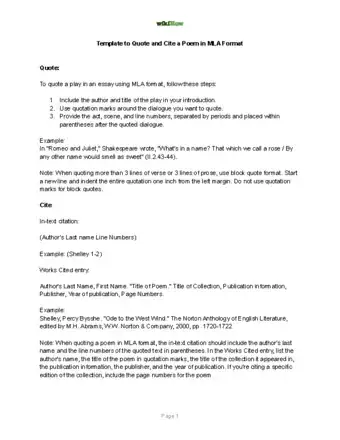
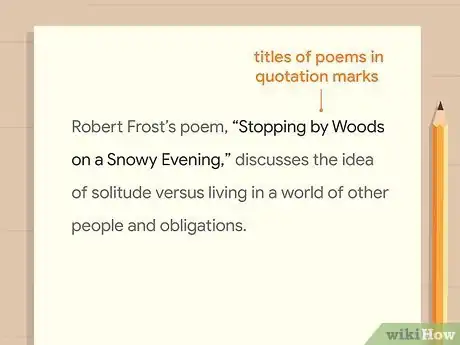

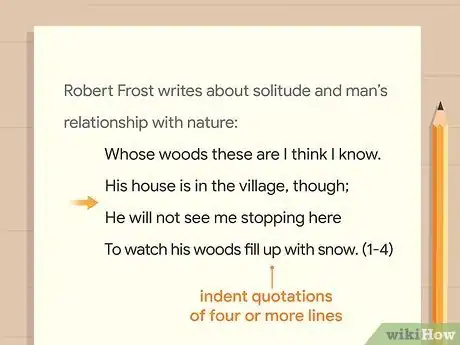

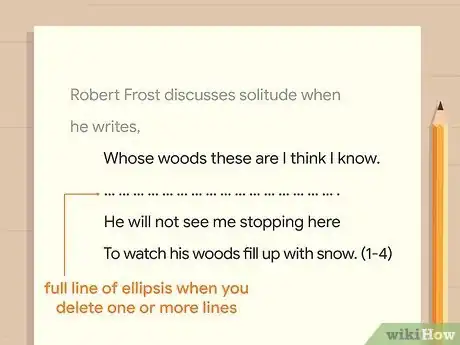
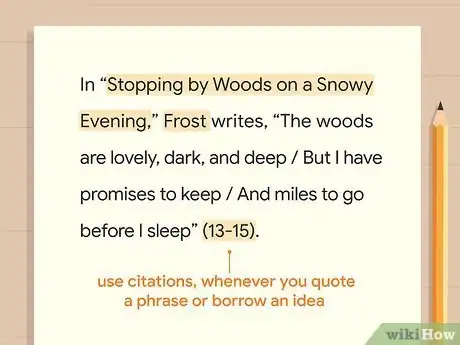
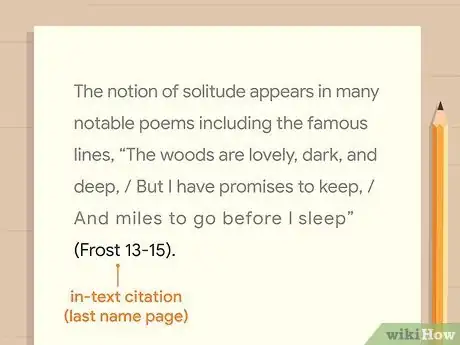
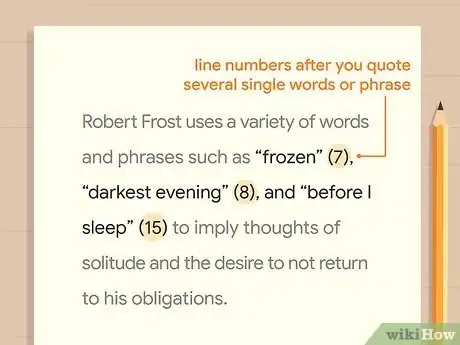
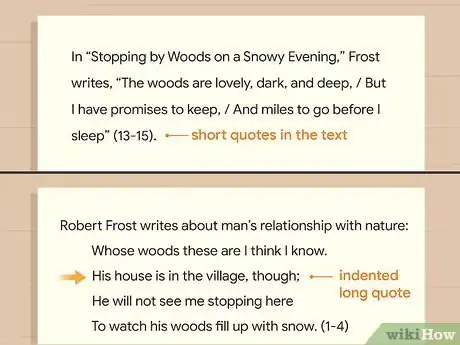


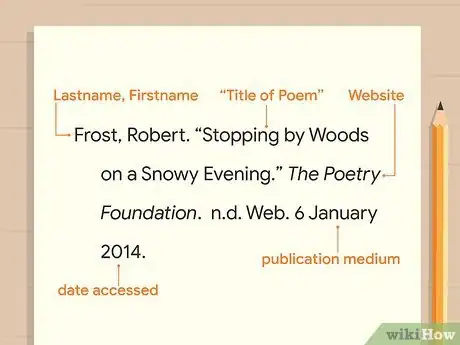

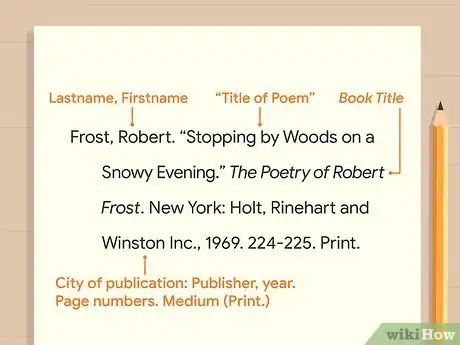









-Step-18.webp)
